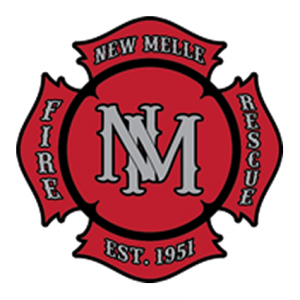What is Carbon Monoxide?
Carbon Monoxide (CO) is a colorless, odorless deadly gas. Because you cannot see, taste, or smell it, Carbon Monoxide can kill you before you know it is there.
Who is at risk?
Everyone is at risk for Carbon Monoxide poisoning. Experts believe, however, that individuals with greater oxygen requirements such as unborn babies, infants, children, senior citizens, and people with coronary or respiratory problems are at greater risk.
Why is Carbon Monoxide so dangerous?
The great danger of Carbon Monoxide is its attraction to hemoglobin in the bloodstream. CO is breathed in through the lungs and bonds with hemoglobin in the blood, displacing the oxygen that cells need to function. When CO is present in the air, it rapidly accumulates in the blood, forming a toxic compound knows as caroxyhemoglobin (COHb).
Where does Carbon Monoxide come from?
Carbon Monoxide is a byproduct of combustion, present whenever fuel is burned. It is produced by common home appliances, such as gas or oil furnaces, refrigerators or clothes dryers, water heaters, fireplaces, charcoal grills, gas ranges, wood burning stoves, and space heaters. Fumes from automobiles also contain Carbon Monoxide and can enter a home through walls or doorways if a car is left running in an attached garage.
All of these sources can contribute to a CO problem in the home. If a home is vented properly and is free from appliance malfunctions, air pressure fluctuations or airway blockages, Carbon Monoxide will most likely be safely vented to the outside. But in today’s energy efficient homes this is frequently not the case. Insulation meant to keep warm air in during winter months can trap CO-polluted air in a home year round. Furnace heat exchangers can crack, vents can become blocked, inadequate air supply for combustion appliances can cause conditions knows as backdrafting or reverse stacking, which force contaminated air back into the home.
How can I protect myself and my family from CO poisoning?
The Consumer Product Safety Commission (CPSC) recommends installing at least one Carbon Monoxide detector per household, near the sleeping area. A second detector near the home’s heat source provides extra protection. Choose an Underwriters Laboratories (UL) listed detector that sounds an audible alarm. First Alert, the leading name in home safety, manufactures a UL listed, battery operated Carbon Monoxide detector that continues to protect even in the event of a power outage. The First Alert model uses patented biomimetic technology, which simulates the body’s response to CO and will not respond to other gases. A hard wired AC model with battery backup is also available.
Common Sources of CO
1. Blocked chimney opening
2. Clogged chimney
3. Portable heater
4. Gas or wood burning fireplace
5. Improperly installed gas kitchen range or cook top vent
6. Gas clothes dryer
7. Operating barbecue grill in enclosed area such as a garage
8. Corroded or disconnected water heater vent pipe
9. Leaking chimney pipe or flue
10. Cracked heat exchanger
If you have any other questions about Carbon Monoxide, contact us at 828-5528.
